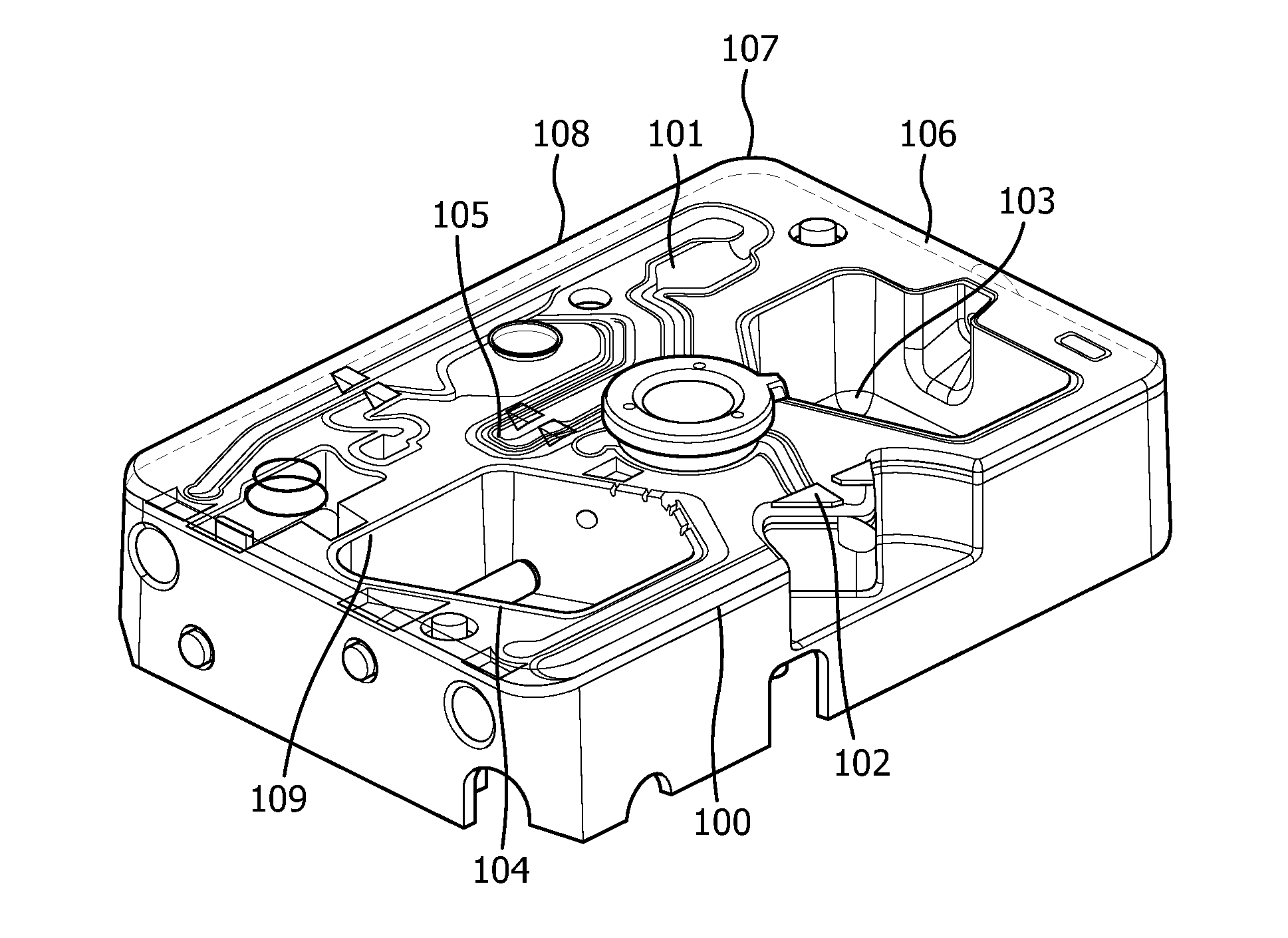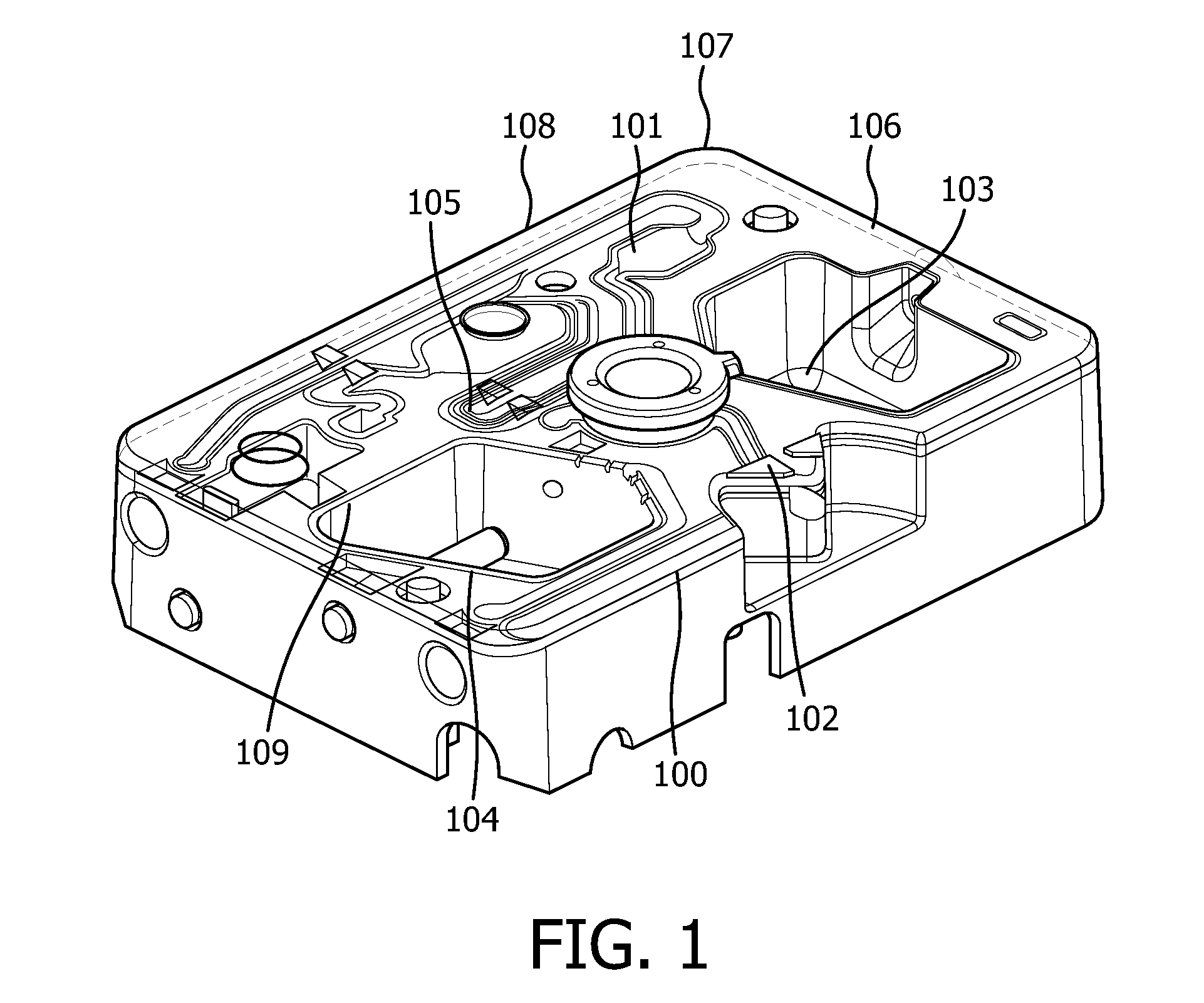Optical fill detection
a technology of optical filling and detection field, which is applied in the field of home monitoring, can solve the problems of low blood cell count patients in danger of serious complications, inability to receive their next treatment, and failure due to incorrect filling, and achieve the effect of high likelihood
- Summary
- Abstract
- Description
- Claims
- Application Information
AI Technical Summary
Benefits of technology
Problems solved by technology
Method used
Image
Examples
example 1
Detection of Blind Spots by Different Imaging Techniques
[0164]The device described in the invention advantageously allows automatic fill detection to take place. This solution works in particular well if the air bubble or defect is in the middle of a valve. There may be, however, a part of a valve that cannot be imaged using a standard light source and detector. In order to improve the system setup, different image and lens options were tested. The tested options are indicated in Table 1, below.
[0165]Option A is standard imaging. The blind distance from the wall was found to be 12.6 to 12% on each side, i.e. greater than a 10% deviation.
[0166]Option B involves using a lens in the cartridge. The blind distance from the wall was found to be 10.5-9.8% on each side.
[0167]Option C requires the camera to be mechanically maneuvered into the valve to extend the field of vision. The blind distance from the wall was found to be 9.8 to 9.1% on each side.
TABLE 1OptionA - Normal ImagingB - Field...
PUM
 Login to View More
Login to View More Abstract
Description
Claims
Application Information
 Login to View More
Login to View More - R&D
- Intellectual Property
- Life Sciences
- Materials
- Tech Scout
- Unparalleled Data Quality
- Higher Quality Content
- 60% Fewer Hallucinations
Browse by: Latest US Patents, China's latest patents, Technical Efficacy Thesaurus, Application Domain, Technology Topic, Popular Technical Reports.
© 2025 PatSnap. All rights reserved.Legal|Privacy policy|Modern Slavery Act Transparency Statement|Sitemap|About US| Contact US: help@patsnap.com



